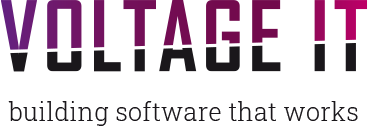Modernization
If you stop getting better,
you’ve stopped being good.
New infrastructures, new opportunities
When we talk about software modernization, we mean the continuous improvement of business-critical applications. These cannot be taken out of service for a long period of time, as they are essential for the business. Nevertheless, they have to be further developed and expanded or changed to include new functionalities. A welcome side effect is that the continuous refactoring and evolutionary design of your strategic applications also modernizes your business. And your teams grow into independent, agile units that help shape your digital strategy.
Reasons for modernization
- New requirements are difficult to implement.
- Existing IT landscape has serious performance, security and functional problems.
- Maintenance is only possible by certain groups of people, such as suppliers, because only there is knowledge about the architecture and design of the solution (vendor lock).
Modernization results
- Simplification and flexibility of the delivery processes
- Cost reduction through intelligent infrastructure concepts for pick and rest periods
- Understandability and changeability of the codebase
- Faster and more agile implementation of requirements
- Use of different technologies or programming languages more suitable for specific modules
- Scaling of the system (scale out and scale in) – both on demand and automated
- Increased monitorability of the IT landscape with reduced recovery periods (Mean Time to Recover MTTR)

Although migration to the cloud is considered a driving factor for IT modernization, we believe it is extremely important to consider all aspects that arise and to implement them consistently:

Lift and Shift
Lift and Shift is also called “Rehost” and literally means: The application, including the databases, is relocated to the cloud (mostly on a VM) as it is. Such an approach can help a little with vertical scaling and improve monitoring, but does not exploit the potential of the cloud. This step would be referred to as “step 0”, although it does not necessarily have to be the first one.
Wrap and Fix
Wrap and Fix is also known as the Anti-Corruption Layer. The method is particularly suitable for parts of the application or IT landscape that are to be completely replaced at a later stage. Here, a new service is implemented, which initially only forwards the requests to the old application. This may require adding an API to the legacy application. In addition, existing functionality is rebuilt so that the application can be replaced or cleaned up over time.
Redesign and Boost
We make your application modern, modular and scalable, relying heavily on containerization and orchestration techniques. Using all Cloud Native principles such as decomposition into microservices by domain context, separation of data storage, definition of clear APIs and 12 Factor App, we transform your organization into a progressive IT-enabled enterprise: You will achieve a maximum level of automation in delivery and scaling and will be fit to detect and eliminate errors within the shortest possible time.
Continuous Refactoring
Since applications are constantly evolving or existing problems need to be fixed, continuous refactoring is one of the most important processes. Regardless of which step is taken to tackle modernization, it must be firmly anchored in the corporate culture of all IT areas. With refactoring, we make improvements to the internal quality, and always in the places that just need to be optimized for business or technical reasons. A solid and successively built test suite ensures fearless modernization.
Instrumentation
We are gradually building automation around the solution, increasing quality and confidence in secure delivery. The more DevOps practices and technologies are integrated, the faster the change-friendliness and agility of the applications will become apparent, acting as the key to modularization, e.g. to a microservice architecture.
Modernization opens up new opportunities for you to securely integrate external APIs and manage them, establish a robust, fail-safe infrastructure, and move toward achieving an agile organization. We look forward to accompanying you in the planning and implementation of this complex project!
Follow us:





